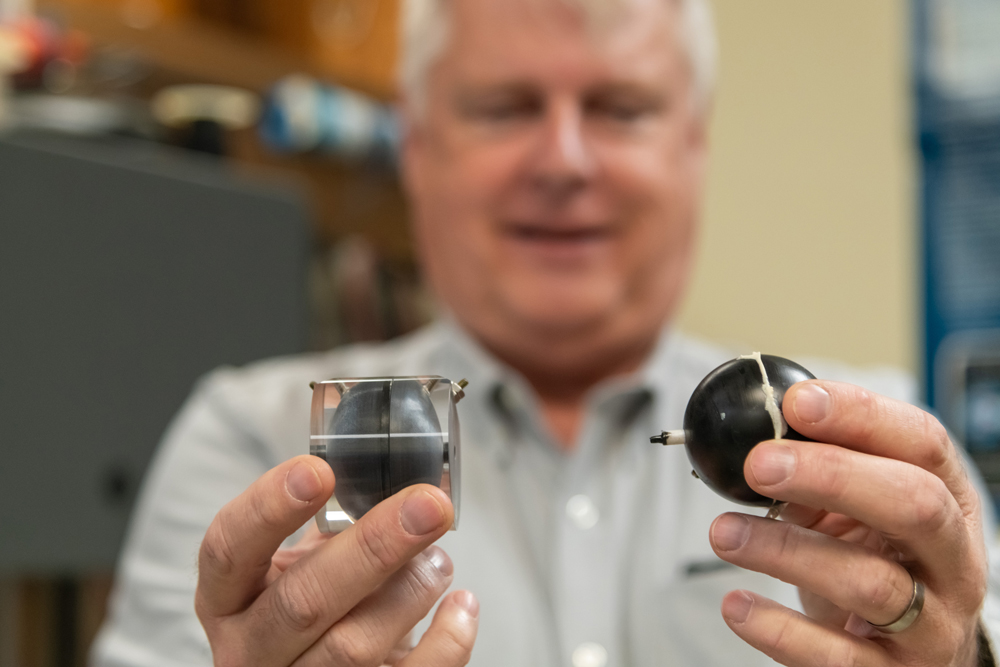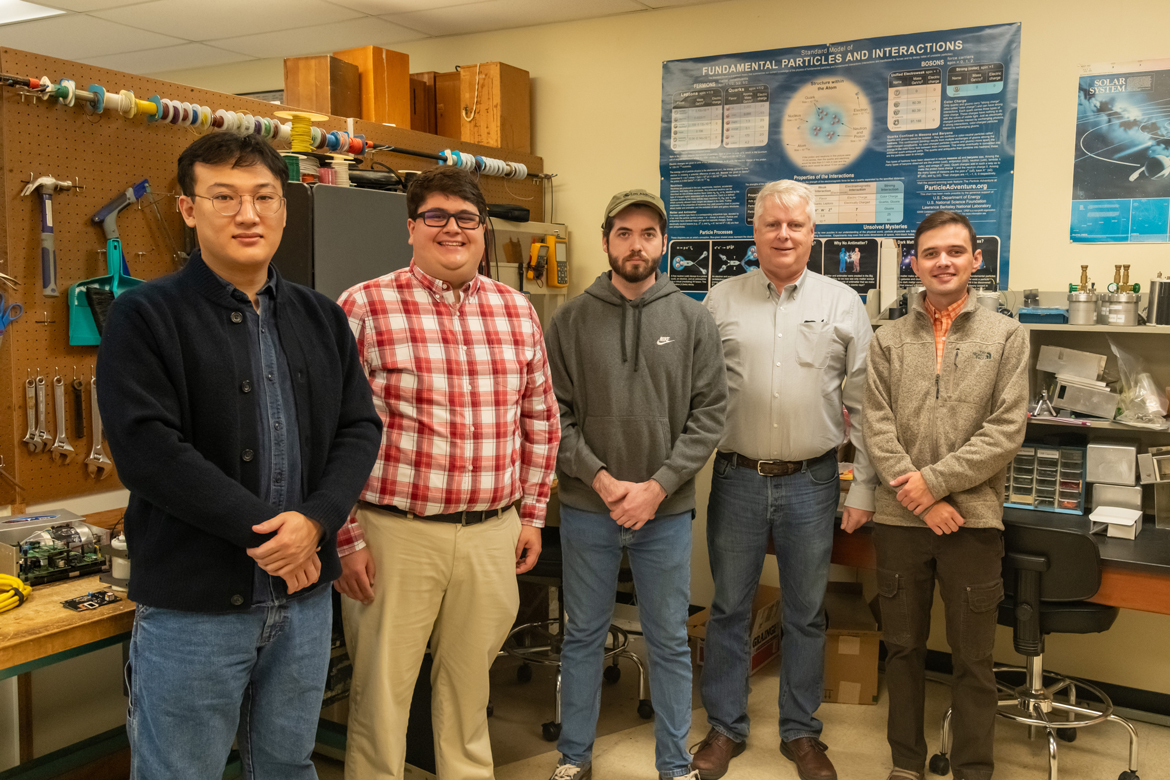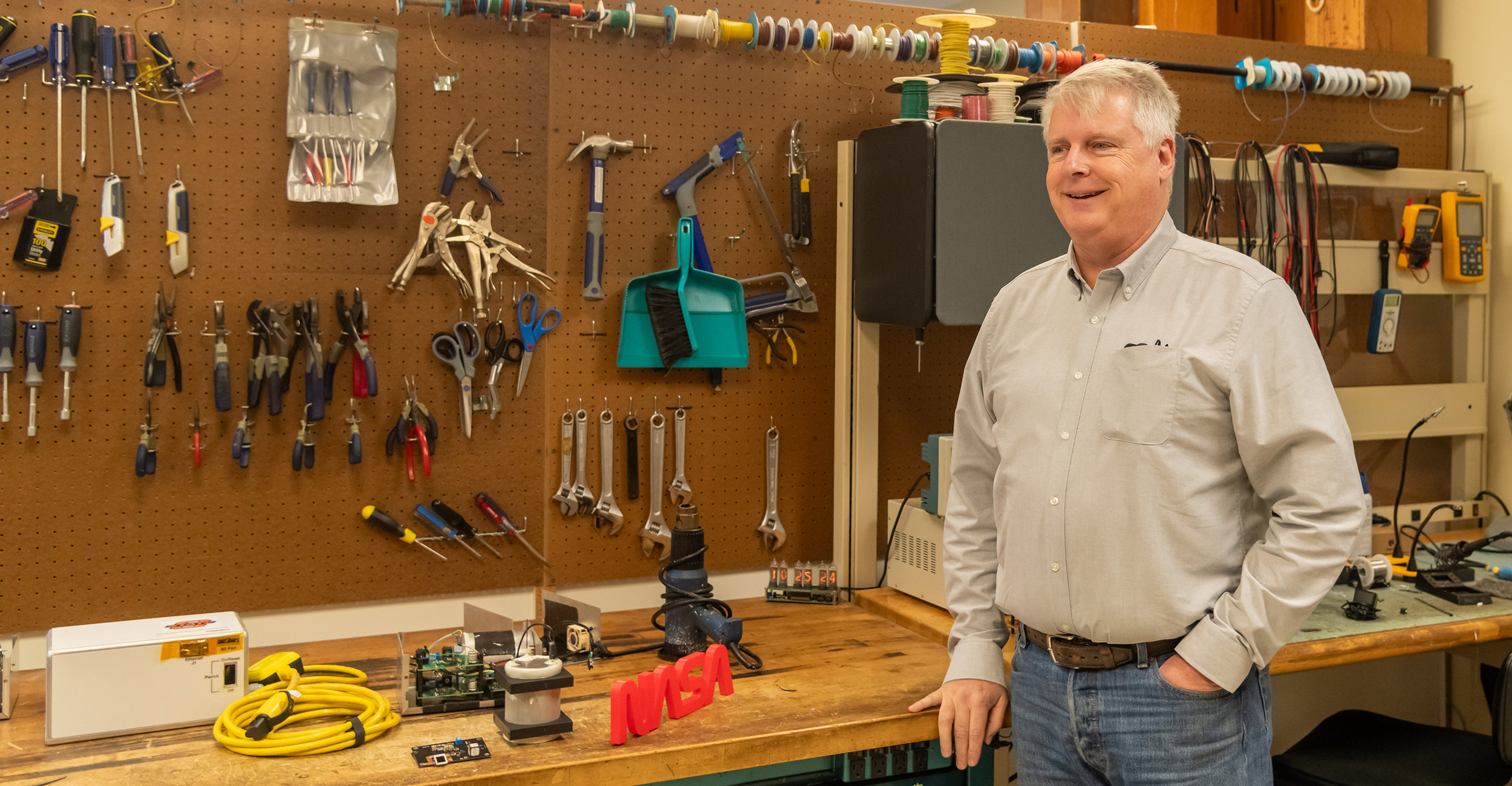
OSU physicists’ radiation detector installed aboard International Space Station
Friday, December 15, 2023
Media Contact: Elizabeth Gosney | CAS Marketing and Communications Manager | 405-744-7497 | egosney@okstate.edu
Dr. Eric Benton and Ph.D. student Tristen Lee from Oklahoma State University’s Department of Physics within the College of Arts and Sciences have been waiting years for the news they received in November: their radiation detector was safely installed on the International Space Station and had begun transmitting large batches of data back to Earth.
“This is the biggest thing I’ve done in my life so far,” said Lee, who came to OSU in 2019 specifically to conduct research with Benton. “The work itself was gratifying, but to see the launch go successfully, it was like a big weight lifted off my shoulders. And then to see the first round of data come back and realize I’m going to get a Ph.D. out of this? Yeah, it was a feeling of relief and then satisfaction.”
Benton and Lee’s radiation detector is called SpaceTED, or Space Tissue Equivalent Dosimeter, and is funded by NASA through an Established Program to Stimulate Competitive Research (EPSCoR) award.
From the outside, SpaceTED is an unassuming piece of equipment about the size of a child’s shoebox. On the inside, however, is a unique radiation detector called a tissue equivalent proportional counter.
“A TEPC is a type of radiation detector designed to mimic the response of human tissue to ionizing radiation,” Lee said. “This allows for more accurate measurements of radiation doses that could be delivered to the human body than from, say, a Geiger counter.”
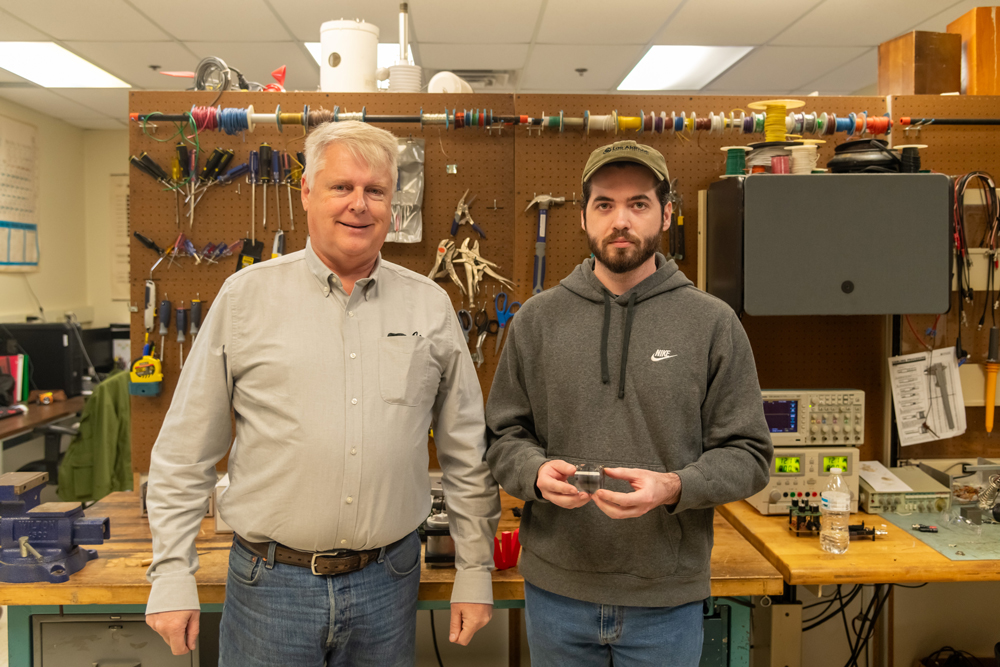
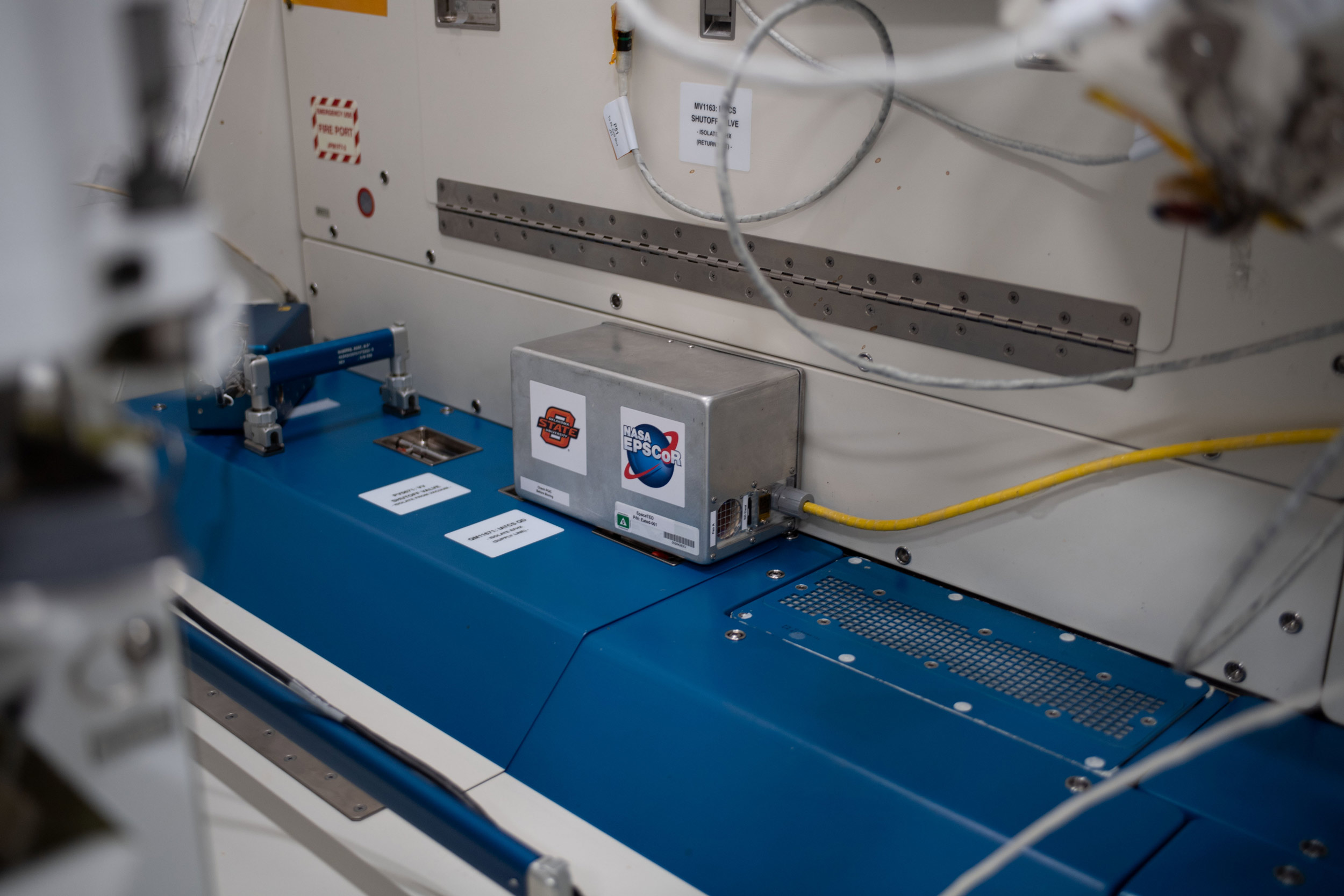
While SpaceTED is collecting data 250 miles above the Earth, Benton and Lee see their research helping those traveling a little closer to home; pilots, flight attendants, military personnel and other professionals flying frequently at high altitudes receive higher doses of radiation than those on the ground, yet regulating acceptable exposure is based solely on estimates and computer models.
“But the computer models have not been validated very well with actual measurements,” Benton said. “The work that NASA is sponsoring is largely in support of getting those measurements.”
SpaceTED is doing just that and will continue to transmit information from its place aboard the ISS for several more months. For Benton, this is 16 years in the making, with his first NASA grant coming in 2007. Earlier prototypes of SpaceTED and other radiation detectors that line Benton’s lab shelves at OSU’s Venture 1 Building are evidence of his — and his students’ — dedication to the work.
“This is actually the third radiation detector built for installation on the International Space Station. The first one was destroyed,” Benton said. “It was on a FedEx truck that was involved in an unfortunate accident that caused the truck and its cargo to burn up.
"The second one made it to the space station in 2018 and was supposed to last for six months but was kicked by an astronaut. They busted off the whole SD card drive, and they could hear it floating around inside the case.”
This time around, Benton and Lee ensured that SpaceTED would be placed in a quieter, less trafficked area of ISS: the Japanese Experiment Module.
“Fortunately, they gave us a second chance,” said Benton, who saw each setback as a chance to improve. “The first thing I did after receiving the news that the detector was kicked was write this huge list of lessons learned and all the things I’d do differently. I handed it to Tristen and said, ‘OK, build a better one.’ And he did.”
To make doubly sure that SpaceTED arrived safely at NASA’s Johnson Space Center, Lee drove it to Houston himself.
“I didn’t want anything to happen to it,” Lee said, joking that he buckled it in with a seatbelt.
Now that SpaceTED is successfully transmitting data — the OSU researchers receive new batches every couple of weeks — Lee can concentrate on combing through it all.
“It’s essentially two columns of numbers, with each row in those columns representing the amount of energy deposited by ionizing radiation in the detector,” Lee said. “We had 38 hours of data in the first batch, which was about 1,700 files.
“We’ll put the data through various conversion routines, and it will give us what’s called the absorbed dose. This is a quantity used to measure the amount of radiation a person receives — whether it’s from X-rays at the dentist or space travel.”
While Lee took the lead on SpaceTED, his fellow physics students in Benton’s lab are also conducting radiation-related research and building on one another’s knowledge in the field: Ph.D. student Martin Yang is working with the Department of Plant and Soil Sciences within OSU’s Ferguson College of Agriculture to study the relationship between cosmic ray neutrons and moisture in soil.
In collaboration with the School of Mechanical and Aerospace Engineering — part of OSU’s College of Engineering, Architecture and Technology — Ph.D. student Conner Heffernan and undergraduate student Garrett Thornton are sending their radiation detectors skyward using high-altitude balloons. They’ve also worked with the OSU rocketry team to launch radiation detectors to 13,000 feet above sea level.
“I’m immensely proud of all these guys,” Benton said. “Physics provides great hands-on opportunities for students. It’s not so much about learning something specific, it’s about learning how to learn.
“When they come out with an undergraduate degree, they have a sort of physics tool kit that allows them to learn whatever it is they need for whichever career they choose. And that’s what the job is about: helping students and sending them on their way.”
